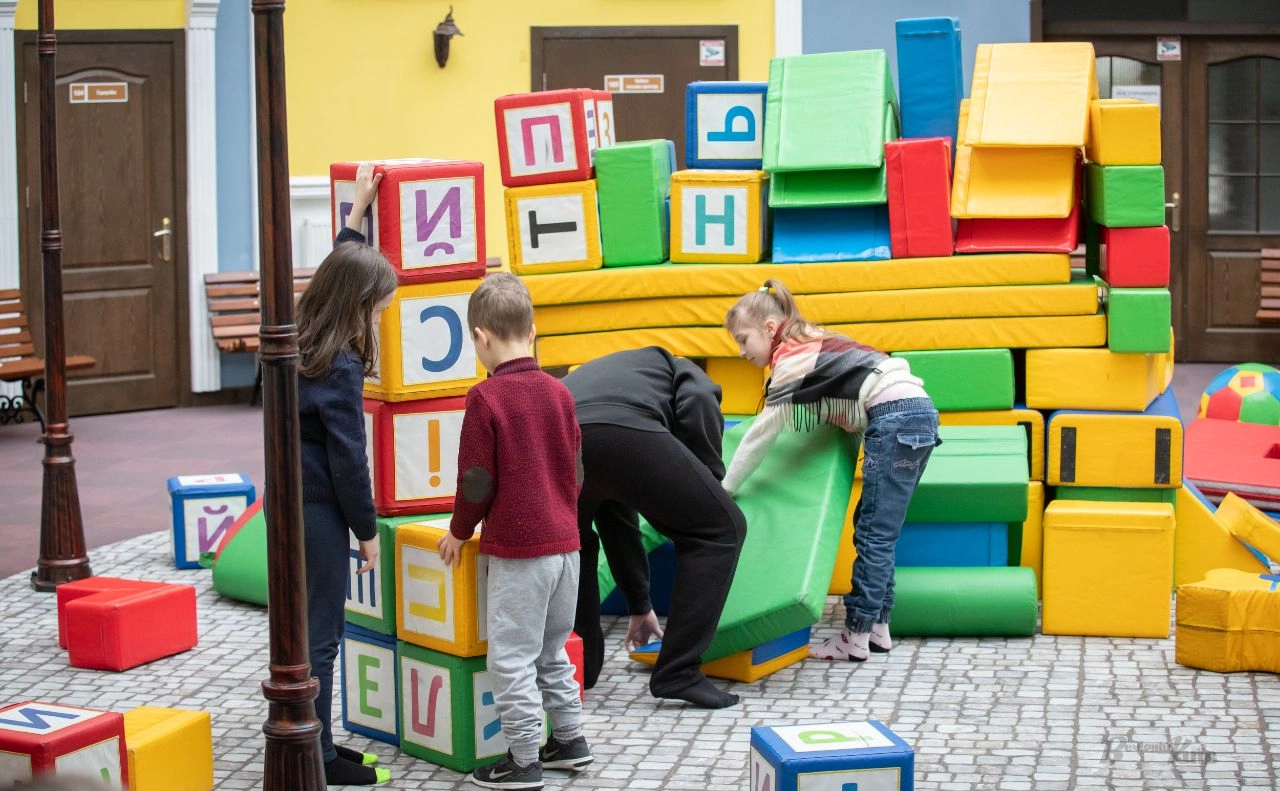A child’s brain adapts easily, creating new neural connections. This is called neuroplasticity. That’s why brain exercises for kids are so effective. The more the brain is trained, the better memory, attention, and imagination work. Brain exercises are fun games that help children develop. They don’t require special equipment – just a little time and a willingness to play.
How a Child’s Brain Works and Why Brain Exercises Are Important
A child’s brain grows and develops very quickly. Just a few years ago, your child was learning to talk, and now, they can remember complex things, create stories, and solve problems. This is possible thanks to neurons – special brain cells that connect in networks. The more a child learns and discovers, the stronger these connections become.
But here’s the trick: neural connections that are not used weaken and disappear. That’s why it’s important to introduce new brain exercises for kids regularly. These tasks and activities activate the brain.
Brain exercises help:
- Improve memory;
- Increase concentration;
- Develop imagination;
- Enhance thinking speed.
Now, let’s move on to the exercises!
Game “Detective” – Developing Attention to Detail
These brain exercises for kids teach them to notice even the smallest details. It’s excellent training for attention and observation skills.
How to play:
- Choose a room or an outdoor area.
- Ask your child to carefully observe the surroundings for 30 seconds.
- Have them close their eyes and describe what has changed (you can move objects, hide something, or add a new item).
- Gradually increase the difficulty. For example, ask: “How many books were on the table?” or “What color was the cup?”.
You can play this game while walking, at home, or even in the car by observing nature or people around you.
The “Memory Room” Method – How to Remember a Lot of Information Easily
Some brain exercises for kids help them retain information better by using imagination.
How it works: Imagine the brain as a house with rooms. Each room stores different knowledge. To remember something, you need to “place” the information in different rooms.
How to teach a child:
- Ask your child to imagine a familiar room.
- Add objects that symbolize words or facts they need to remember.
- Walk through the room in their mind, repeating the information.
For example, if they need to remember a shopping list, they can imagine milk on the bed, apples on the table, and bread in the closet. This way, the brain will easily “retrieve” the information when needed.

Association Game – Brain Exercises for Kids to Develop Imagination and Logical Thinking
Associations help link new information to what is already familiar. These brain exercises for kids improve memory and boost creative thinking.
How to play:
- Say a word (e.g., “sun”).
- The child must say a word associated with it (e.g., “yellow”).
- Continue the chain: “yellow” → “banana” → “fruit” → “garden”.
This game can be played one-on-one or in a group. It develops not only memory but also thinking speed.

Mnemonic Chain Technique – Brain Exercises for Kids to Improve Memory
Mnemonics are simple techniques that help remember information through connections and associations. One of the most effective methods is the mnemonic chain. The essence of this neuro-exercise for kids is to link words or facts into a funny or unusual story.
How to teach a child:
- Take a few words to remember (e.g., “elephant,” “umbrella,” “ice cream,” “rocket”).
- Create a story with them: “The elephant held an umbrella in its trunk, ate ice cream, and then flew away on a rocket.”
The funnier and more vivid the story, the easier it is for the child to remember the words. This method works well for memorizing lists, foreign words, or dates.
Drawing and Music as Brain Exercises for Kids
Art is not just creativity but also a great neuro-exercise for kids. Drawing and music help develop spatial thinking, memory, and emotional intelligence.
Drawing:
- Improves motor coordination;
- Helps a child focus;
- Develops imagination.
Encourage your child to not just draw but to create pictures from memory, recreating what they’ve seen or imagined.
Music:
- Improves mathematical abilities;
- Develops hearing and memory;
- It helps us learn new things faster.
Even if a child doesn’t play musical instruments, their auditory memory can be trained with simple exercises. For example, play “Guess the Sound”: play different sounds and ask them to identify them.
Physical Activity as Brain Exercises for Kids
Movement not only strengthens muscles but also positively affects brain function. Physical exercise improves blood circulation, helping neurons work better. That’s why they can be considered brain exercises for kids.
Simple brain exercises for brain development:
- Cross-body movements – e.g., touching the left elbow to the right knee. These activate both brain hemispheres.
- Yoga for kids – helps focus and relax.
- Balancing – walking on a line or standing on one foot improves coordination and attention.
Physical activity helps kids learn better and remember information faster.
Interesting Brain Exercises for Kids – Video
Looking for fun and useful brain exercises for kids? Be sure to check out this video:
Conclusion
Developing a child’s brain is an exciting and important task. By practicing brain exercises for kids, you help them remember better, think faster, and enhance creativity. These methods strengthen neural connections and make learning easy and fun. The key is to engage, not force!
Frequently Asked Questions
Brain exercises for kids improve memory, attention, and thinking. They help children learn faster and concentrate better. These exercises also develop creativity and logic.
There are brain exercises for memory, attention, logic, and creativity. They include games, physical activities, drawing, or music. Associative methods and imagination exercises are also useful.
For young children, the best brain exercises include memory games, associations, and movement-based tasks, such as “What Changed?”, “Detective,” or cross-body movements. The main goal is to keep the activity simple, engaging, and enjoyable.












